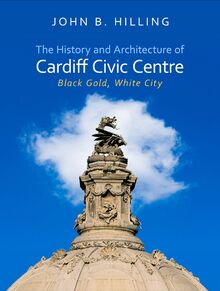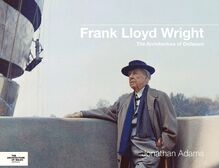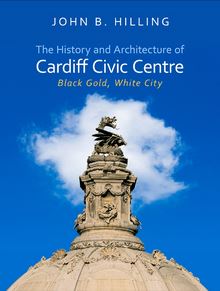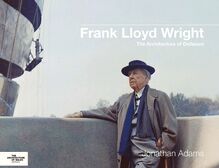The History and Architecture of Cardiff Civic Centre , livre ebook
171
pages
English
Ebooks
2016
Vous pourrez modifier la taille du texte de cet ouvrage
Obtenez un accès à la bibliothèque pour le consulter en ligne En savoir plus
Découvre YouScribe en t'inscrivant gratuitement
Découvre YouScribe en t'inscrivant gratuitement
171
pages
English
Ebooks
2016
Vous pourrez modifier la taille du texte de cet ouvrage
Obtenez un accès à la bibliothèque pour le consulter en ligne En savoir plus
Publié par
Date de parution
20 mai 2016
Nombre de lectures
1
EAN13
9781783168446
Langue
English
Poids de l'ouvrage
2 Mo
Cardiff’s civic centre in Cathays Park, described as the finest civic centre in the British Isles, is an impressive planned group of public buildings, begun largely with wealth created by the coal industry in the south Wales coalfield. This book covers the Cardiff site’s earlier evolution as a private park in the nineteenth century by the fabulously rich Bute family, and the borough’s battles to obtain land for public buildings and the park’s development in the twentieth century, to become Britain’s finest civic centre. All the buildings, memorials and statues in the park are fully described and illustrated in this book which includes maps, plans and photographs. The History and Architecture of Cardiff Civic Centre is the first in the series Architecture of Wales, published in partnership with the Royal Society of Architects in Wales.
1 A Small, Sleepy Town in the Shadow of a Castle
2 Black Gold
3 A Gentleman’s Park
4 A Battle for Sites and Minds
5 Negotiations and Diversions
6 Plans and Petitions
7 A View of the Civic Centre: Its Layout, Appearance and Open Spaces
8 Development of the Civic Centre Before the First World War: Buildings and Monuments
9 Development of the Civic Centre Between the Wars: Buildings and Monuments
10 Development of the Civic Centre After the Second World War: Buildings and Monuments
11 Cardiff’s Civic Centre in Context
12 Conclusion
Publié par
Date de parution
20 mai 2016
Nombre de lectures
1
EAN13
9781783168446
Langue
English
Poids de l'ouvrage
2 Mo
Architecture of Wales
General Editor
Mary Wrenn
Royal Society of Architects in Wales –
Cymdeithas Frenhinol Penseiri yng Nghymru
Series Editors
Oriel Prizeman, Cardiff University
David Thomas, Catalina Architecture
Jonathan Vining
Advisory Panel
Irena Bauman, Director, Bauman Lyons Architects, Leeds
Richard Parnaby, Professor of Architecture, University of Wales Trinity Saint David
Alan Powers, author and architectural historian
Ian Pritchard, Secretary General, Architects Council of Europe (ACE)
Damian Walford Davies, Head of School, Cardiff School of English,
Communication and Philosophy, Cardiff University
Published in cooperation with
The Royal Society of Architects in Wales –
Cymdeithas Frenhinol Penseiri yng Nghymru
Architecture of Wales
THE HISTORY AND ARCHITECTURE OF CARDIFF CIVIC CENTRE
Black Gold, White City
John B. Hilling
UNIVERSITY OF WALES PRESS 2016
© John B. Hilling, 2016
All rights reserved. No part of this book may be reproduced in any material form (including photocopying or storing it in any medium by electronic means and whether or not transiently or incidentally to some other use of this publication) without the written permission of the copyright owner. Applications for the copyright owner’s written permission to reproduce any part of this publication should be addressed to the University of Wales Press, 10 Columbus Walk, Brigantine Place, Cardiff CF10 4UP.
www.uwp.co.uk
British Library CIP Data A catalogue record for this book is available from the British Library
ISBN 978-1-78316-842-2
eISBN 978-1-78316-844-6
The right of John B. Hilling to be identified as author of this work has been asserted in accordance with sections 77 and 79 of the Copyright, Designs and Patents Act 1988.
With thanks to the Royal Commission on the Ancient and Historical Monuments of Wales for supporting the publication of this book. The Royal Commission on the Ancient and Historical Monuments of Wales is the investigation body and national archive for the historic environment of Wales. It has the lead role in ensuring that Wales’s archaeological, built and maritime heritage is authoritatively recorded and seeks to promote the understanding and appreciation of this heritage nationally and internationally.
Cover design: Olwen Fowler Cover image: H. C. Fehr’s sculpture above the dome of the City Hall, Cardiff (image reproduced by permission of Cardiff City Hall).
Contents
Series Editor’s Preface
Foreword Gillian Clarke
List of Illustrations
Introduction and Acknowledgements
Editorial Note
1 A Small, Sleepy Town in the Shadow of a Castle
2 Black Gold
3 A Gentleman’s Park
4 A Battle for Sites and Minds
5 Negotiations and Diversions
6 Plans and Petitions
7 A View of the Civic Centre: Its Layout, Appearance and Open Spaces
8 Development of the Civic Centre Before the First World War: Buildings and Monuments
9 Development of the Civic Centre Between the Wars: Buildings and Monuments
10 Development of the Civic Centre After the Second World War: Buildings and Monuments
11 Cardiff’s Civic Centre in Context
12 Conclusion
Brief Biographies of Architects
Architectural Glossary
Bibliography
Notes
Series Editor’s Preface
G IVEN THE CONVENTIONAL image of Wales as a land of song and poetry, architecture and the visual arts can be easily overlooked, a neglected poor relation to the country’s seductive musical and literary traditions. Relatively little has been published about the architectural heritage of our nation, despite the fact that buildings and places have been created in Wales that bear comparison with contemporaneous examples elsewhere, produced by architects engaged in the same wider cultural currents and discourse. There are many reasons for this: Wales has so often been judged as being too small, too homely, or simply not distinctive or fashionable enough to attract the sustained attention of architectural critics and historians. Add to this a lack of consistent patronage and a deeply-ingrained Nonconformist tradition that discourages any form of showing off, it is not surprising perhaps that we lack a more complete record of the architectural achievements of past generations.
Of course, the truth is that Wales has a rich built heritage, from the medieval to the modern. Its architectural character is very different from that of the other nations of the British Isles, and it is this very distinctiveness that deserves to be celebrated. The Royal Society of Architects in Wales is delighted to present, with the University of Wales Press, a series of books exploring the architecture of Wales, adding new chapters to the evolving story of the buildings, places and spaces of our ‘damp, demanding and obsessively interesting country’. 1
Mary Wrenn, Director RSAW The Royal Society of Architects in Wales (RSAW) represents and supports Chartered Members of the Royal Institute of British Architects (RIBA) in Wales.
Foreword
Gillian Clarke
T HE POWER OF PUBLIC BUILDINGS and their arrangement to influence the lives of those who live and work among them cannot be exaggerated. We should never underestimate the human need for beautiful spaces, or people’s ability to value ‘commodity, firmness and delight’ in their urban surroundings: the street sweeper, a tramp asleep on a bench beside a statue, the man who prongs litter in the park, the men and women who arrive before dawn to clean a public building, the bin-lorry men at the back doors, students basking on the lawns outside the university, the museum’s secretaries and doormen and chattering flocks of children herded by their teachers. All, entering a Civic Centre set among green spaces, gardens and trees, from the terraced streets and farther suburbs of the city where they live, can claim great buildings as their own for a few hours, but they will continue to inhabit them, and be inhabited by them, all of their lives.
By the time I was 10 years old, I was entranced by Cardiff’s Civic Centre, its enticing pathways, lawns and trees, its buildings as white as the ‘treasure-stones’, Penarth alabaster, found on the beach nearby. My favourite stone bear, couchant on the castle wall with his fourteen fellow beasts, was gate-keeper to a land of palaces, gardens, broad avenues, pillars, domes, a dragon, and a clock-tower you could see from miles away. Inside the white palaces were marble halls, curving staircases, statues, patterned tiles, and lofty spaces where I felt part of a fairy story. It was another country, and it was mine.
My reward for being good, while my father checked mail in his office at the BBC in Park Place, was our Saturday visit to the Museum: across the road, past the Gorsedd Gardens, up the wide flight of steps, under the white-pillared portico, and into the glorious lofty space of the hall. I ran to see my favourite treasure: the fox frozen forever in his glass case. A little later, it was the blue lady I most often visited, Renoir’s La Parisienne , dressed in every blue in the world, the blue of Porthkerry bluebell woods, lapis lazuli, cobalt, indigo and sky.
A recent visit to the gallery reminded me that I know that painting as well as I do, and others in the Davies bequest to the Museum, because I grew up with them. I possessed them. Later, as a new student at the University, at the Freshers’ Ball staged in the City Hall, I ran up the staircase into the Marble Hall, past statues of Welsh heroes, to dance to the music of John Dankworth and Cleo Laine.
After the clamour of shops and traffic, once over the canal where boys dived for pennies, something new began. A garden. A rose-coloured road. White stone. Sixty acres where a magic city gleamed among gardens, a perspective of luminous palaces leading through avenues of trees. I possessed it, and it possessed me.
The daily walk to College from Cardiff General Station – I see it as a map – took me up St Mary Street, High Street, past Greyfriars, over the Dock Feeder, up the rose-red avenue of elms, through Alexandra Gardens, over Museum Place, and through the white stone portal into the cool entrance hall of University College. I remember meeting my tutor to discuss my Spenser essay at a window seat in the half-light of the main hall; my Anglo-Saxon seminar in a little room up a narrow stone staircase, coal smoking in the grate; and sitting summer exams as the brass bands of the Miners’ Gala Parade passed by every June. In the upstairs gallery of the College library, where I studied for those exams, were little ‘rooms’, almost enclosed by a pair of bookcase ‘walls’: the third wall a book-lined walkway, the fourth open to a spacious view from the lofty ceiling to all that was happening on the floor below. I cannot forgive the barbaric destruction of that generous space, and its little rooms-with-a-view, by the insertion of a mezzanine floor. Nor do I forgive those who bulldozed the ruins of Greyfriars. I remember public outrage in the 1970s at a City Council transport department proposal to destroy the animal wall to make room for a highway. Public rage saved it. Even sadder, but nobody’s fault, was the loss of the double avenue of elms, planted for the third Marquess of Bute in 1779–80. In my university days they were a green cathedral. I walked that way when they were in full leaf just to see how the giants touched fingers across Edward VII Avenue, or the way their shadows lay on snow. I grieve for them still, long since dead from Dutch elm disease, felled like firewood beside the road.
This book tells the story of Cardiff’s Civic Centre in two ways, as a time-line and as a map. The time tells the story from the late eighteenth century to the present day. The map shows the 60 acres (24 hectares) of its architectural plan. At the far north end of Edward VII Avenue and Museum Avenue, Corbett Road draws a line west to east, a conclusion, the end. But it is not, quite. On the far side of Corbett Road, the two avenues of trees




